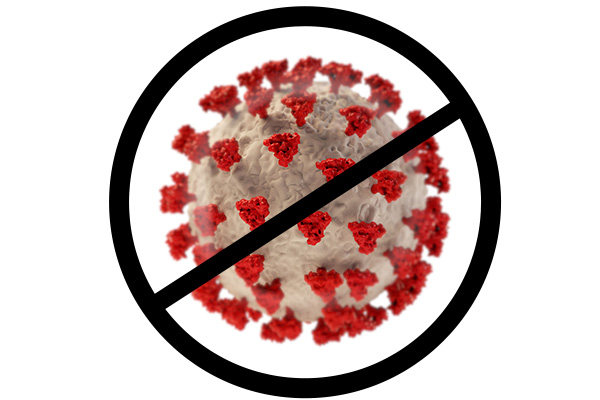Presidential Heating & Air Conditioning
Gaithersburg HVAC Contractors
Share
Share on FacebookTweet
Tweet this0Share
Share on LinkedIn0 shares on LinkedInHow to Prevent the Coronavirus from Spreading
 We all know that if someone with the coronavirus coughs or sneezes on you, you’re at risk of catching it. But even the simple acts of speaking, laughing, and breathing, release particles from our noses and mouths along with respiratory droplets and tiny aerosolized particles that come out in clouds that may linger in the air. And if we’re infected with the coronavirus — even if we don’t have any symptoms — those excretions could contain live, contagious, devastating COVID-19 that can make others sick.
We all know that if someone with the coronavirus coughs or sneezes on you, you’re at risk of catching it. But even the simple acts of speaking, laughing, and breathing, release particles from our noses and mouths along with respiratory droplets and tiny aerosolized particles that come out in clouds that may linger in the air. And if we’re infected with the coronavirus — even if we don’t have any symptoms — those excretions could contain live, contagious, devastating COVID-19 that can make others sick.
Researchers increasingly believe that clouds of the virus expelled when someone speaks are able to stay aloft in the air and potentially infect people farther away than the recommended 6 feet of social distance, especially in poorly ventilated indoor rooms. In settings like these, an infectious person can release clouds containing the virus that can build up, linger, and waft in the air only to be inhaled by passersby and settle in their lungs.
Coronavirus Prevention—the Evidence
Researchers think clouds of airborne coronavirus exhaled by infectious people may be a key factor in “superspreading” events…one gathering that results in a number of new cases.
In late January, 10 people were infected in a windowless restaurant in Guangzhou, China. More than 80 people had shared the dining room during the lunch period, but the 10 who got sick were all sitting in the path of one air conditioning vent that may have sucked in viral particles from someone in the room who was later confirmed to have COVID-19.
Clusters of infections have also emerged among students returning to college campuses, guests at wedding receptions, and residents in nursing homes.
“We see this over and over and over again,” said Maria Van Kerkhove, technical lead for the World Health Organization’s emergencies program, on Aug. 21, “This virus is being driven by outbreaks in clusters.”
What’s still unclear is how long the virus lingers in the air, how far it travels through a room, from room to room, and how much you need to breathe in to get infected.
But scientists say it’s become increasingly clear that airborne virus particles help the coronavirus “superspread.”
How Do You Protect Yourself from the Coronavirus at Home?
Make the Indoor Air Quality More Like the Outdoors
We spend approximately 90% of our time indoors. A growing body of scientific evidence has indicated that the air within our homes can be seriously more polluted than the outdoor air in even the largest industrialized cities. The Environmental Protection Agency (EPA) even concluded there are typically 2-10 times more pollutants indoors than out-of-doors which are responsible for as much as 50% of all illnesses.
Researchers have determined airflow is a factor in transmission of viruses including COVID-19. “You limit aerosol transmission by increasing ventilation and increasing air circulation,” says Seema Lakdawala, a flu researcher at the University of Pittsburgh. Shelly Miller, a professor in the Paul M. Rady Department of Mechanical Engineering at the University of Colorado Boulder, has spent years studying the airborne transmission of diseases. This summer, she worked closely with campus facilities teams to ensure that students, faculty and staff can breathe the safest possible air. She explains, “The general principle is that we want to dilute inside air with outside air.”
The most efficient way to bring in the outside air is with a fresh air ventilation system. Fresh air ventilators bring fresh air from the outside into the home through vents on the outside of the home. The fresh influx of air disrupts the standing air diluting and moving odors, moisture, and contaminants through the air and into the filtration system (for example the Carrier Infinity Air Purifier).
Clean the Air
Researchers recommend that you install an air purifier if members of your household work outside the home. Donald Milton, an infectious disease aerobiologist at the University of Maryland, explains it this way, “You wouldn’t drink water downstream from another town without treating it. But we breathe air from other people without treating it”
Installed inside the HVAC air duct, an air purification system (for example, an iWave whole house air purifier) attracts and kills viruses as well as allergens, bacteria and molds. Independent testing on certain Air Purification Systems have shown to significantly (up to 99%) inactivate captured viruses and germs including coronavirus.
Keep Your Distance
Ultimately, health officials say, there is no such thing as zero risk. But by keeping the air around you moving you’ll minimize your chances of inhaling a big, infectious whiff of the virus. When around others, keep your distance – 6 feet apart, make sure you wear your mask correctly, making sure that it fits snugly over your nose and mouth while not obstructing your ability to breathe.


